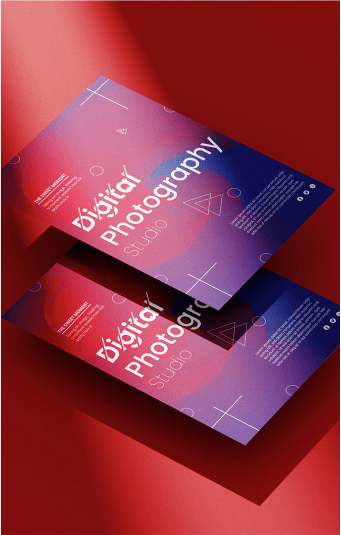Do you want to create powerful user interfaces and experiences that captivate users and drive conversions? If so, then understanding the fundamental principles of UI/UX design is crucial. With this comprehensive guide, businesses and startups can learn how to best apply UI/UX design in their digital products. Here, we’ll walk through tips on strategizing visuals, creating an effective interface flow, addressing accessibility needs, getting feedback from customers and so much more. You’re sure to come away with all you need for success in crafting effective designs for today’s digital world.
Understand the Goals and Requirements of the Design
When undertaking a UI/UX design project, it is important to first fully understand the goals and requirements. These include “what”, “why”, and “who” corresponding to the UIUX design and the target audience. Not only should you have a clear vision of how you want the end result to look, but you should also know what value it will bring to users. That means determining who the likely users are, what features they need, and where they’ll be using the product or application. Additionally, it can be helpful to think about why someone might use your design over competitor designs and highlight how yours stands out from others. Once these components are finalized, you can then move on to creating a thoughtful and personalized user interface that allows people to navigate your product or application easily and effectively.

Research Best Practices in Design
When researching best practices in UI/UX design, it can be helpful to look at what solutions are already out there and consider which ones will work best for your target audience. Analyzing existing solutions helps shed light on the key components of solid user experience design, including intuitive navigation, visual appeal, and design for different devices. Additionally, making notes on why particular solutions are successful can give insightful feedback on what would work best with the end user experience you are aiming to create. Researching existing solutions is an important part of ensuring a great UI/UX design – taking the time to review these solutions can make all the difference when creating something that works successfully for everyone involved.

Outline Your UI/UX Design
When designing a UI/UX, it is important to identify the key elements that define the user experience. This includes the aesthetics, functionality, features, and workflows that need to be taken into account when building a successful user interface. By understanding how users interact with the interface, we can determine pathways that can be seamlessly integrated into the design to guide customers through their desired journey. Once key elements are identified and user pathways determined, wireframes can then be created emphasizing functional components such as buttons, menus, and forms according to their importance in creating a fluid user experience. Doing this helps visualize proposed changes before implementation for easier testing and modifying of interfaces.

Create a Visual Prototype
Creating a visual prototype is an excellent way to bring your product design ideas to life before beginning development. Utilizing software like Figma or Adobe XD, you can create an interactive model that allows you to showcase the look and feel of your proposed design and demonstrate the flow between different user experiences. This is an essential element for quickly creating and refining designs before this process moves forward. Visual prototypes offer a great tool to share with team members and stakeholders so they will have a clear understanding of expectations. Additionally, easy prototyping can help highlight areas where features might be missing or need further development as well as any areas that could lead to potential usability issues.

Test Your UI/UX Design
Good UI/UX design should be the foundation upon which a product is built – and only by testing it in real-world scenarios can you uncover potential issues or flaws. It’s important to run usability tests to assess the overall user experience and make sure the intended goal of your interface is achieved. A successful test should be structured around realistic tasks and use cases so that you can evaluate with actual users how easily they can interact with the design. From understanding what works well for them, to collecting feedback on any elements that hinder usability, this valuable insight can be used to identify any challenges within UI/UX design and provide guidance for future solutions. Carry out usability tests as part of your development process and take their constructive criticism into account when making changes – this will ensure a more positive outcome when it comes to user experience.

Make Final Adjustments & Launch
Finally, after investing long hours of hard work and effort into crafting a unique user experience, it is time to make the final adjustments and launch your design. It is important to take in feedback received during testing and see how you can incorporate improvements made. When gathering feedback be sure to ask open-ended questions and record everything accurately so that you can refer back to it later. Additionally, involving the design process allows you to gain a better understanding of their needs and expectations. This will ensure that you are creating something that will meet their requirements. After all the changes are made, launch the design and be ready to receive continued feedback from users while they test out your product. Building the best possible user interface that meets the desires of users takes great amounts of creative energy – launching it will require just as much enthusiasm! Celebrate all the hard work put in to create a successful product.

Conclusion
In conclusion, design is a crucial part of creating digital products, and it requires a deep understanding of not just aesthetics but also user behaviour. To bring your designs to life, you must start by having an in-depth understanding of goals and requirements. Then research what’s worked in the past and make notes to inform your own design direction. Outline the essential components required for the digital product before constructing a visual prototype to showcase its look and feel. QA testing is also important, as this allows the designers to identify any issues before the product is released into the public domain. With QA testing, bugs, and other problems can be identified and fixed quickly – making sure that the end-user experience is as smooth as possible. Lastly, analytics should be incorporated, so designers can track how users interact with the product. This data can then be used to inform any necessary changes and make sure the product is running as efficiently as possible. Based on that data, QA testing should also be conducted regularly, to ensure that no bugs or other problems are present in the product before or after its launch. Then, after making any necessary adjustments, it’s time to launch! With this process laid out from start to finish, designers will have a solid foundation on which to build great digital products that fulfil all the goals and requirements desired.









